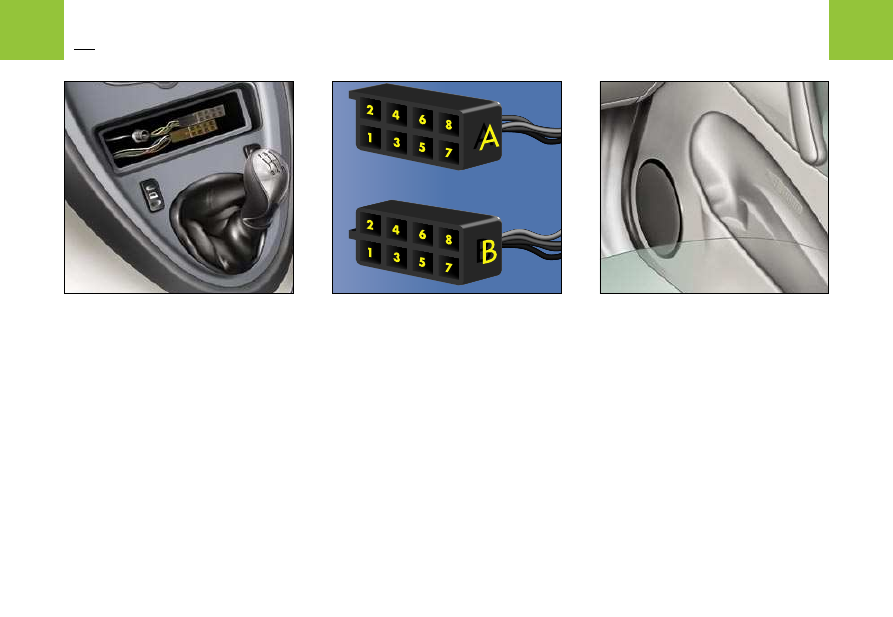Citroen Xsara Picasso (2005 year). Instruction - part 6

III
III
R A D I O P R E - E Q U I P M E N T
Radio connections
Remove the storage bin to gain access to the wiring and connections allow-
ing the audio system, loudspeakers and aerial wire to be connected.
Note: To connect the audio system, consult the CITROËN dealer network.
CITROËN radio option
See the separate instruction booklet in the vehicle document pack.
Fitting speakers to the front and
rear doors
Remove the grille to gain access to
the connections.
Front:
Diameter: 165 mm
Rear:
Diameter: 130 mm or 165 mm
Fitting of 165 mm speakers is pos-
sible at the rear, by means of cut-
ting a section in the inner door
panel as indicated.
On the dashboard
Two tweeters, one at each end of the dashboard.
Unclip the grille and pull it, connect the tweeters, secure them to the grille by
swivelling them by 1/4 of a turn, refit the grilles.
86